28.01.2020
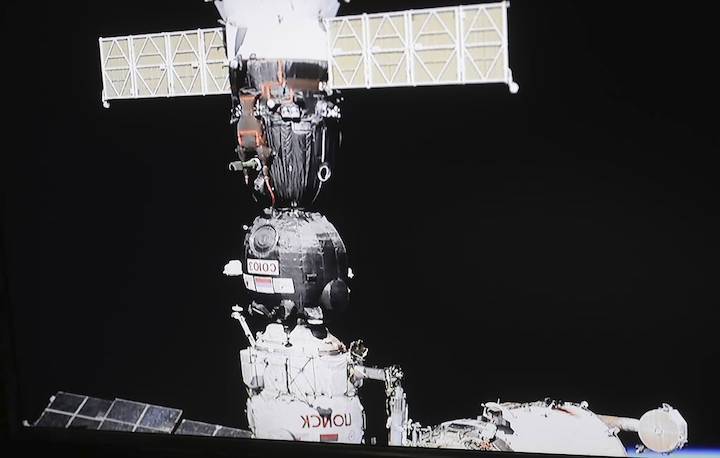
The Soyuz MS-13 capsule manned by Christina Koch, a NASA astronaut who has set the women's record for space mission duration, Alexander Skvortsov of Russia, and Luca Parmitano of Italy will land at noon (Moscow time) on February 6, Russian state corporation Roscosmos said in a statement on Monday.
"Consistent with the flight plan of the International Space Station, the Soyuz MS-13 capsule is due to land on February 6, 2020. It will bring to Earth the crew of Roscosmos cosmonaut Alexander Skvortsov, ESA astronaut Luca Parmitano, and NASA astronaut Christina Koch. The capsule is expected to land at 12:14:16 p.m. Moscow time," the statement said.
Preparations for the Soyuz landing will begin at approximately 5:30 a.m. Moscow time, when the crew will close the hatch between the spaceship and the ISS Pirs module. Undocking is due to take place at 8:49 a.m. Moscow time. The crew will then initiate the engine braking process, and the spaceship will start leaving the orbit. After this, the compartments will separate from one another. The landing capsule carrying the crew and the cargo will continue its controlled descent, and the remaining parts of the ship will burn up in the dense layers of the atmosphere.
NASA astronaut Christina Koch will return to Earth having broken the women's record for space mission duration. The previous record was set by NASA astronaut Peggy Whitson, who spent 288 days in space in 2017. Koch's mission is supposed to last for 328 days.
The ISS will be manned by Oleg Skripochka of Russia and Andrew Morgan and Jessica Meir of the United States.
Quelle: Interfax
----
Update: 31.01.2020
.
NASA TV to Air Landing of Record-Setting Astronaut Christina Koch, Crewmates
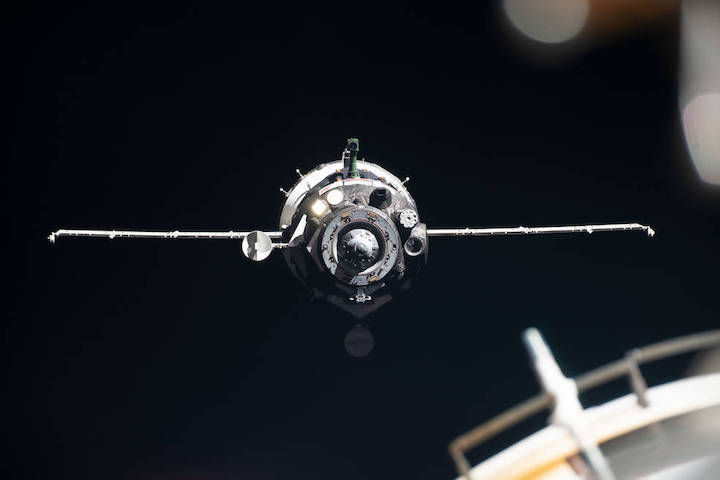
The Soyuz MS-13 crew spacecraft is seen as it approached the International Space Station for docking on the 50th anniversary of NASA landing humans on the Moon for the first time. The Soyuz will return Expedition 61 crew members NASA astronaut Christina Koch, station Commander Luca Parmitano of ESA (European Space Agency), and Soyuz commander Alexander Skvortsov of Roscosmos to Earth Feb. 6.
Credits: NASA
NASA astronaut Christina Koch, who has spent more time in space on a single mission than any other woman, is scheduled to return to Earth on Thursday, Feb. 6, along with two of her International Space Station crewmates.
Koch, along with station Commander Luca Parmitano of ESA (European Space Agency), and Soyuz commander Alexander Skvortsov of the Russian space agency Roscosmos will depart the station Feb. 6 in a Soyuz spacecraft that will make a parachute-assisted landing at 4:14 a.m. EST southeast of Dzhezkazgan, Kazakhstan (3:13 p.m. Kazakhstan time).
Live coverage of their return will begin at 9 p.m. EST Wednesday, Feb. 5, on NASA Television and the agency’s website. Landing coverage will begin at 3 a.m. Thursday, Feb. 6.
Koch, who launched in March 2019 with NASA astronaut Nick Hague and Russian cosmonaut Alexey Ovchinin, is wrapping up a 328-day mission on her first flight into space. Koch’s extended mission will provide researchers the opportunity to observe effects of long-duration spaceflight on a woman as the agency plans to return to the Moon under the Artemis program and prepare for human exploration of Mars.
Koch will have spanned 5,248 orbits of the Earth – a journey of 139 million miles, roughly the equivalent of 291 round trips to the Moon. She conducted six spacewalks during her 11 months on orbit, spending 42 hours and 15 minutes outside the station. She witnessed the arrival of a dozen visiting vehicles and the departure of another dozen. After landing, she will have completed the second longest single spaceflight by a U.S. astronaut after retired astronaut Scott Kelly, placing her seventh on the list of American space travelers with the most time in space.
Parmitano and Skvortsov will land after 201 days in space, having launched with NASA’s Andrew Morgan last July. Morgan will remain on the station until his return to Earth on April 17. Parmitano and Skvortsov will have completed 3,216 orbits of Earth and 85.2 million miles at landing.
Completing his second mission, Parmitano will have logged a total of 367 days in space, more than any ESA astronaut in history. Skvortsov is completing his third mission and a total of 546 days in space, good for 15th place on the all-time spaceflight endurance list.
After preliminary medical evaluations, the crew will return to the recovery staging city in Karaganda, Kazakhstan, aboard Russian helicopters. Koch and Parmitano will board a NASA plane bound for Cologne, Germany, where Parmitano will be greeted by ESA officials before Koch proceeds home to Houston. Skvortsov will board a Gagarin Cosmonaut Training Center aircraft to return to his home in Star City, Russia.
At the time of undocking, Expedition 62 formally begins aboard the station, with NASA astronauts Jessica Meir and Morgan as flight engineers and Oleg Skripochka of Roscosmos as station commander. They will remain on board the orbital outpost until early April, when NASA astronaut Chris Cassidy and Russian cosmonauts Nikolai Tikhonov and Andrei Babkin will launch to the station.
Full NASA TV coverage is as follows (all times Eastern):
Wednesday, Feb. 5:
8:30 a.m.: Space station change of command ceremony, during which Parmitano will hand over command to crewmate Oleg Skripochka of Roscosmos
9 p.m.: Farewell and Soyuz hatch closure coverage (hatch closure at 9:25 p.m.)
Thursday, Feb. 6:
12:15 a.m.: Soyuz undocking coverage (undocking scheduled for 12:50 a.m.)
3 a.m.: Soyuz deorbit burn and landing coverage (deorbit burn at 3:18 a.m. and landing at 4:13 a.m.)
Quelle: NASA
----
Update: 4.02.2020
.
NASA Astronaut’s Record-Setting Mission Helps Scientists for Future Missions
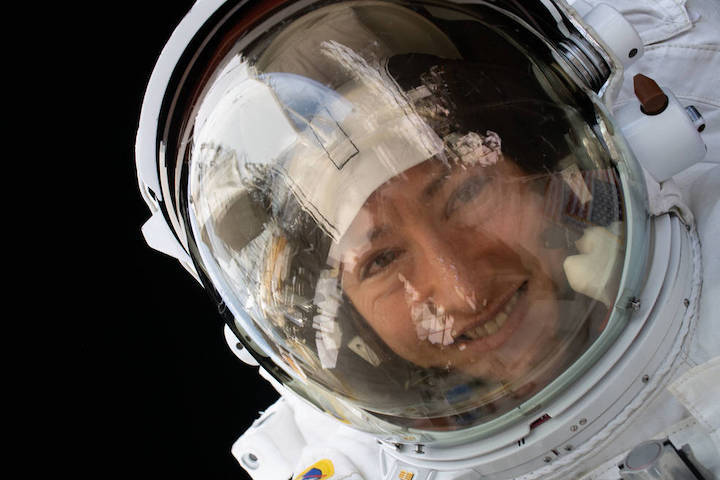
NASA astronaut Christina Koch is pictured during a spacewalk on January 15, 2020.
Credits: NASA
NASA astronaut Christina Koch is set to return to Earth on Thursday, Feb. 6, after 328 days living and working aboard the International Space Station. Her mission is the longest single spaceflight by any woman, which is helping scientists gather data for future missions to the Moon and Mars.
Koch will return to Earth alongside ESA (European Space Agency) astronaut Luca Parmitano and Russian cosmonaut Alexander Skvortsov. She has been a crew member for three expeditions – 59, 60 and 61 – during her first spaceflight. She now holds the record for the second-longest single spaceflight by a U.S. astronaut, which places her seventh on the list of U.S. space travelers for overall time in space. Former NASA astronaut Scott Kelly holds the longest single spaceflight for U.S. astronauts at 340 days, set during his one-year mission in 2015-16.
Koch’s work during her record-setting mission included participation in more than 210 investigations, helping advance NASA’s goals to return humans to the Moon under the Artemis program and prepare for human exploration of Mars. Koch participated in a number of studies to support those future exploration missions, including research into how the human body adjusts to weightlessness, isolation, radiation and the stress of long-duration spaceflight.
One particular research project Koch participated in is the Vertebral Strength investigation, which better defines the extent of spaceflight-induced bone and muscle degradation of the spine, and the associated risk for broken vertebrae. This timely endeavor is expected to provide insight into the development of future countermeasures, such as preventative medicine or exercise. These results also could provide recommendations for limiting the amount of force astronauts are subjected to during launch.
Koch’s most memorable experiments during her time on the station space included work on the Microgravity Crystals investigation, which crystallizes a membrane protein that is integral to tumor growth and cancer survival. Although crystallization of this protein has yielded unsatisfactory results on Earth, this investigation leverages extensive protein crystallization work on the space station, significantly increasing the likelihood of successful crystal growth. Results may support the development of cancer treatments that target the protein more effectively and with fewer side effects.
NASA has gathered vast amounts of data about astronaut health and performance during the past 60 years and has focused recently on extended durations up to one year with the dedicated mission of Scott Kelly, Peggy Whitson’s three long-duration space missions that together lasted 665 days, and now the extended-duration missions of both Koch and NASA astronaut Andrew Morgan, who is in the midst of a 10-month mission. These opportunities also have demonstrated there is a significant degree of variability in human response to spaceflight, as well as the importance of determining the acceptable degree of change for both men and women.
NASA has a rigorous training process to prepare astronauts for their missions, a thoroughly planned lifestyle and work regimen while in space, and an excellent rehabilitation and reconditioning program for them after they return to Earth. Thanks to these measures, the human body remains robust and resilient even after spending nearly a year in space. Research from these studies will guide NASA’s research for years to come, as NASA continues to prioritize the health and safety of astronauts on spaceflight missions, particularly long-duration missions aboard the International Space Station, as well as missions to the Moon, Mars, and beyond.
During her spaceflight, Koch completed 5,248 orbits of Earth and a journey of 139 million miles, roughly the equivalent of 291 trips to the Moon and back. She also supported the arrivals and/or departures of more than a dozen Soyuz and cargo resupply spacecraft from the U.S., Japan, and Russia. Koch ventured outside the confines of the space station for six spacewalks during her mission, spending 42 hours and 15 minutes outside the station. Among those was the first all-woman spacewalk, which she conducted alongside NASA astronaut Jessica Meir.
Quelle: NASA
----
Update: 6.02.2020
.
Soyuz MS-13 to land at noon on Feb 6
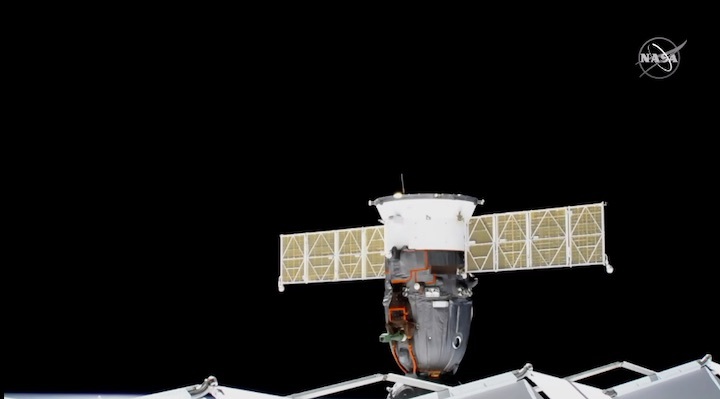
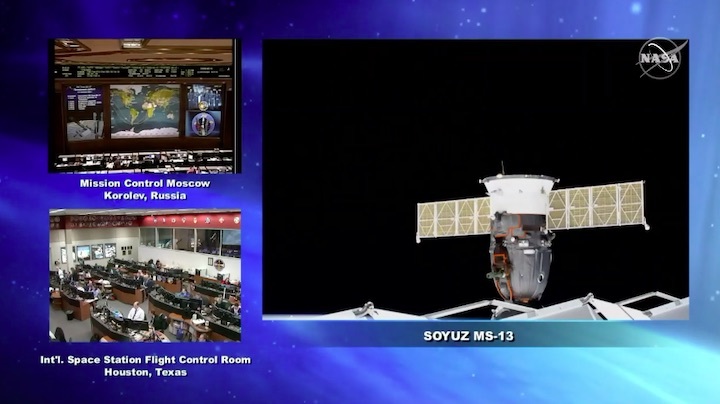
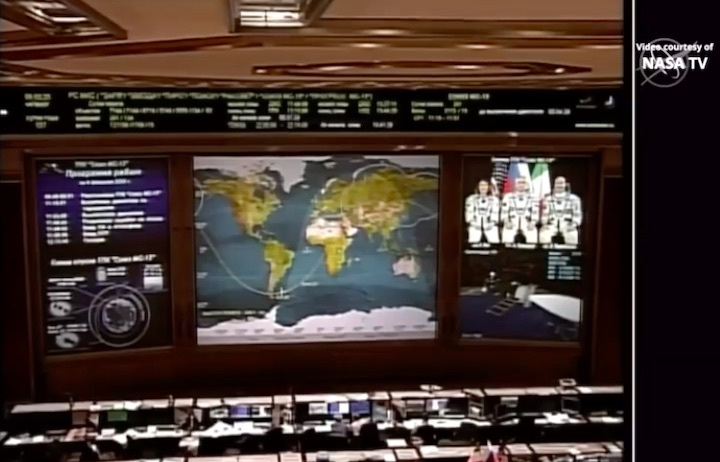
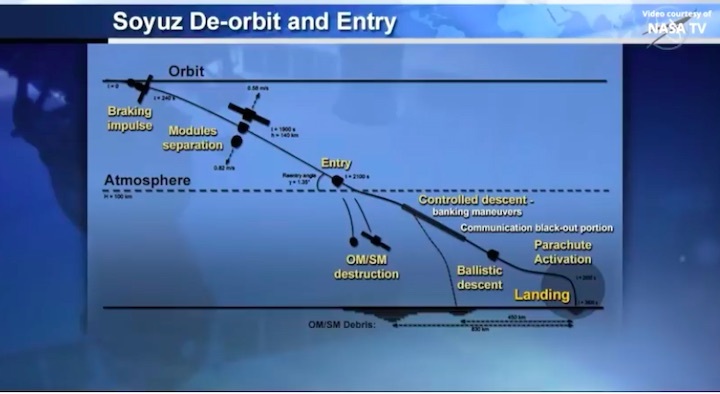
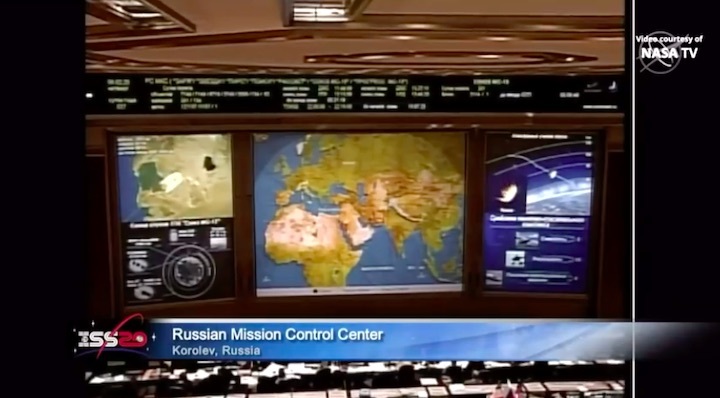
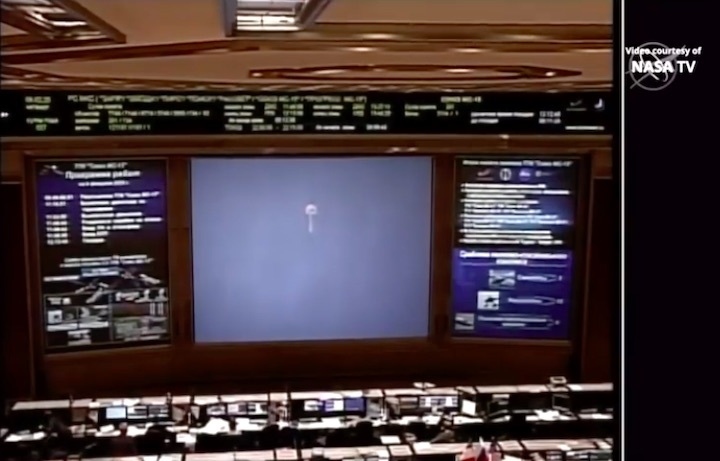
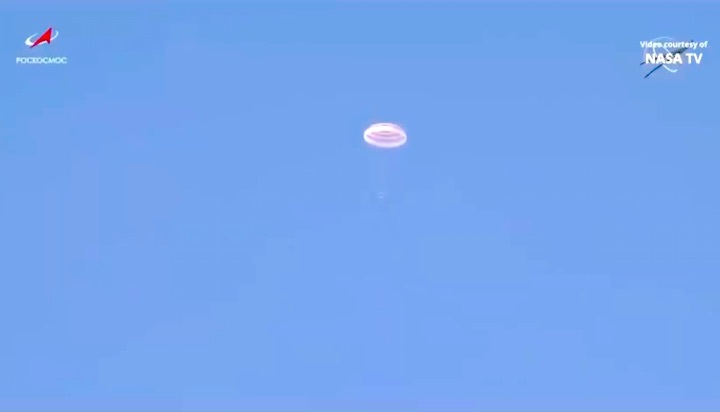
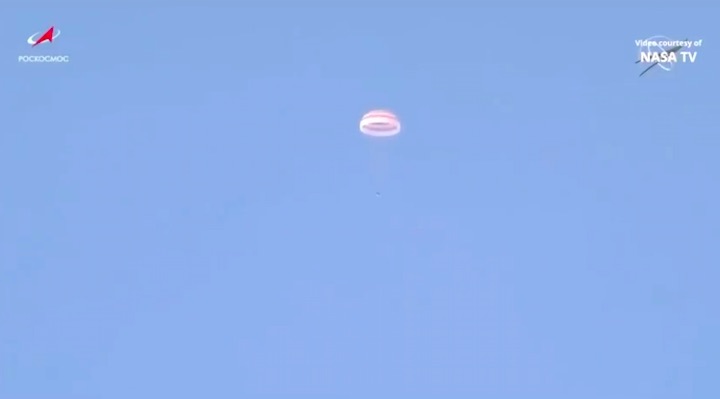
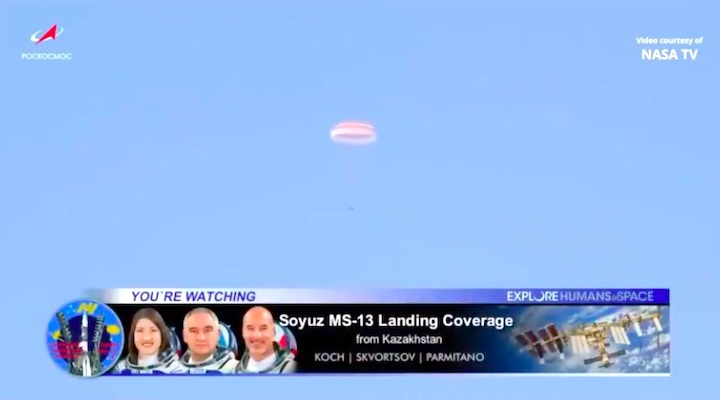
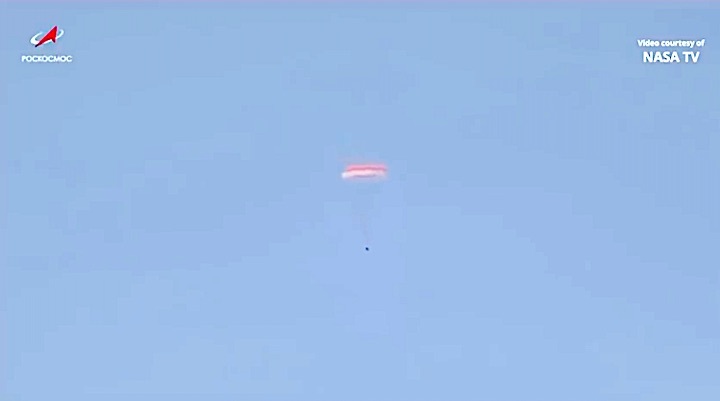
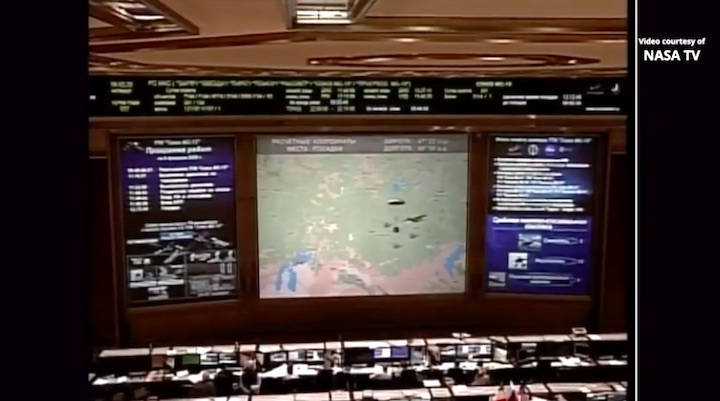
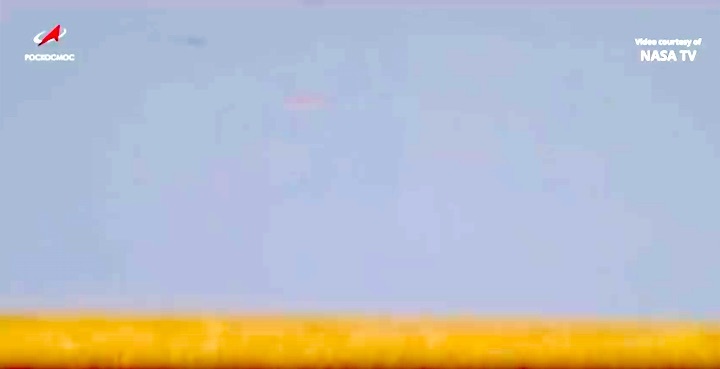
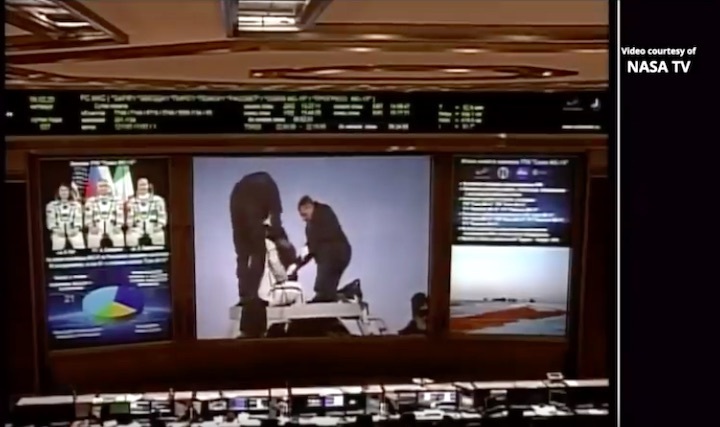
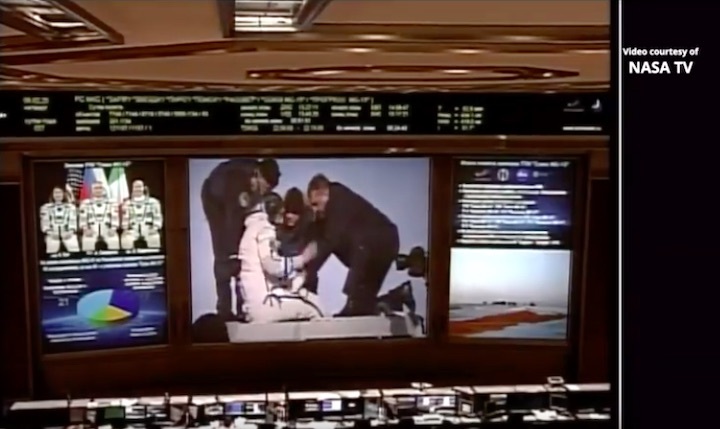

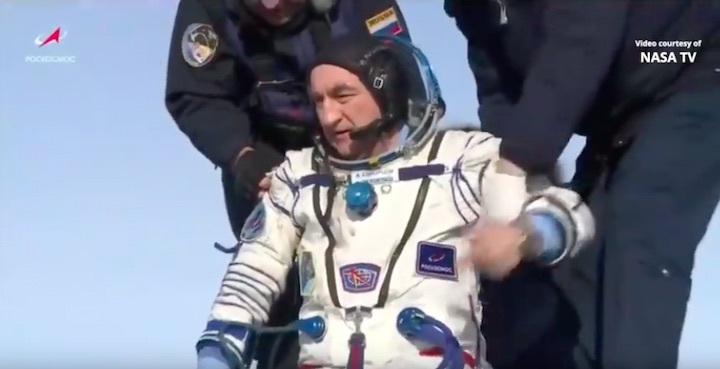
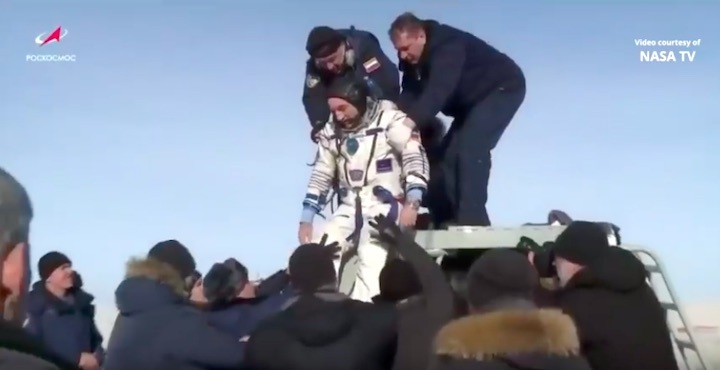
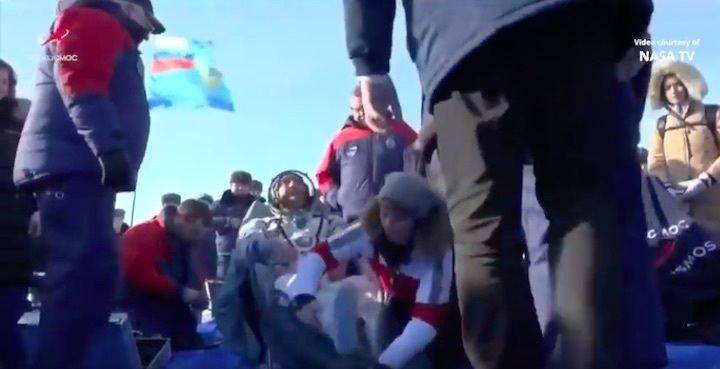
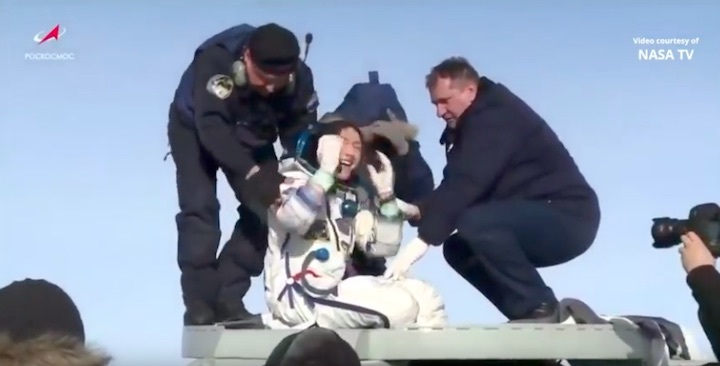
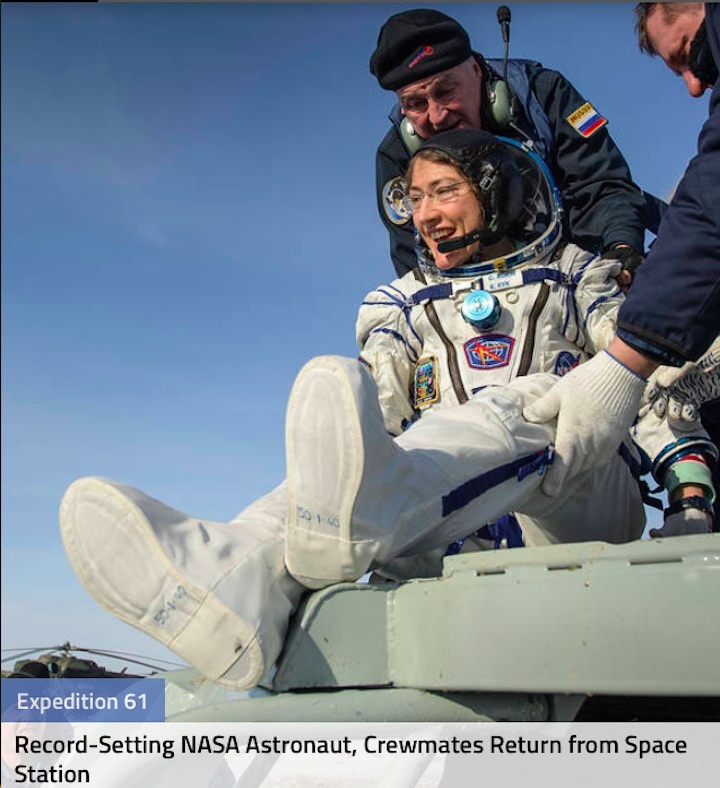
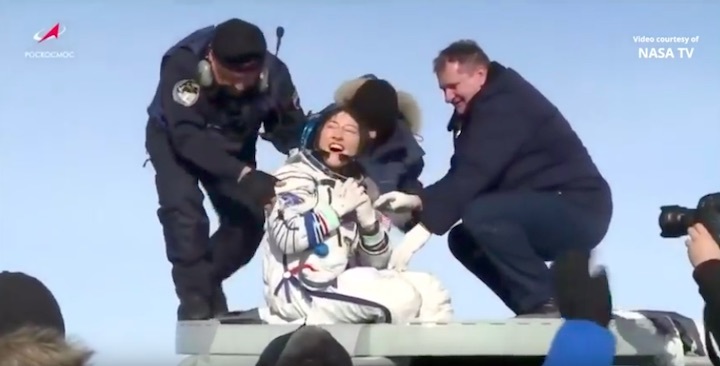
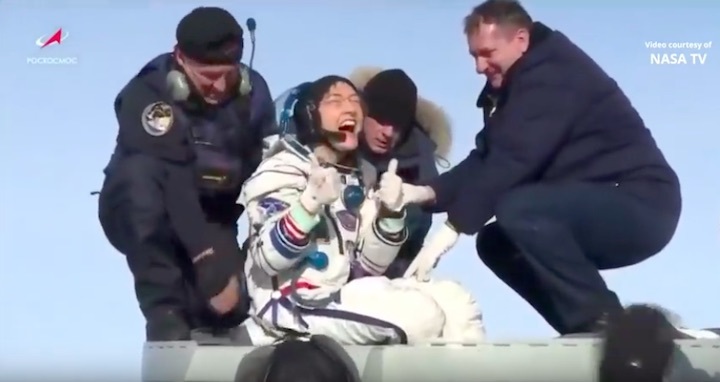
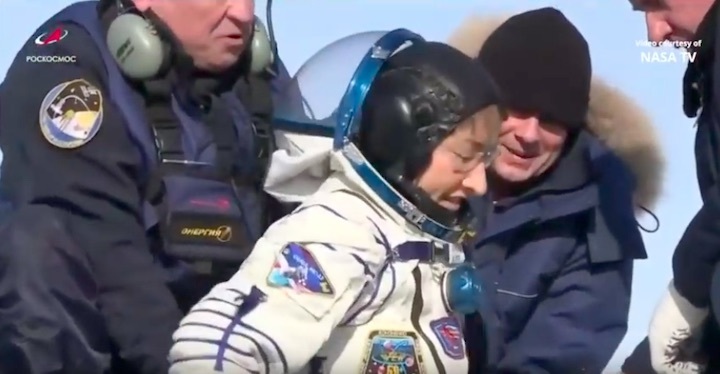
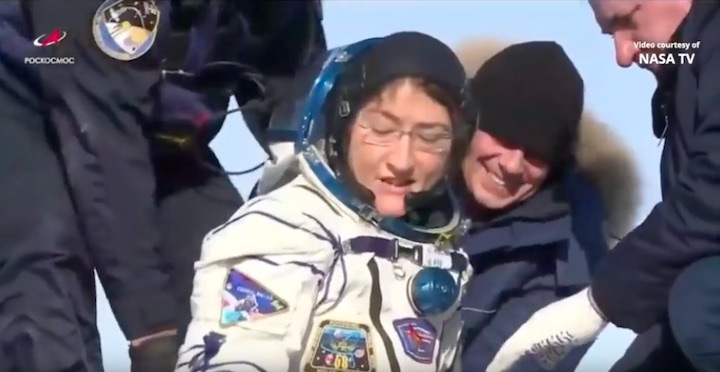
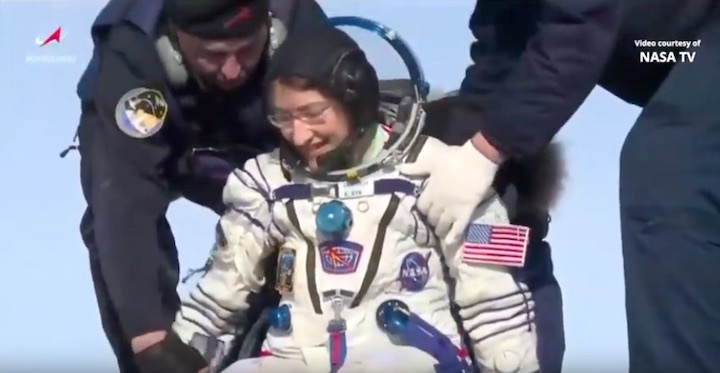
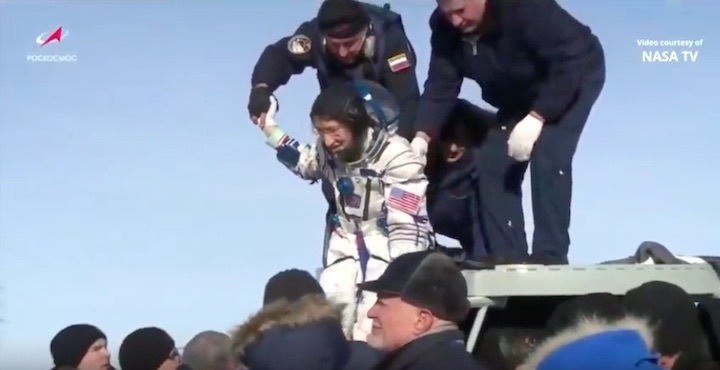

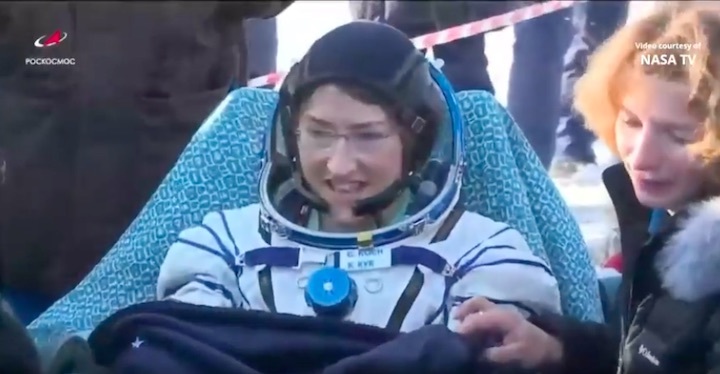
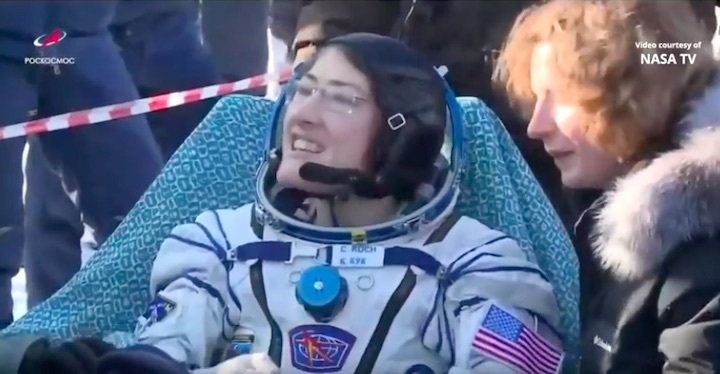

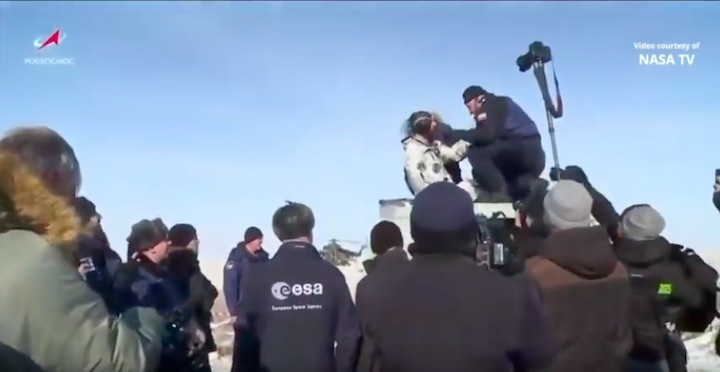
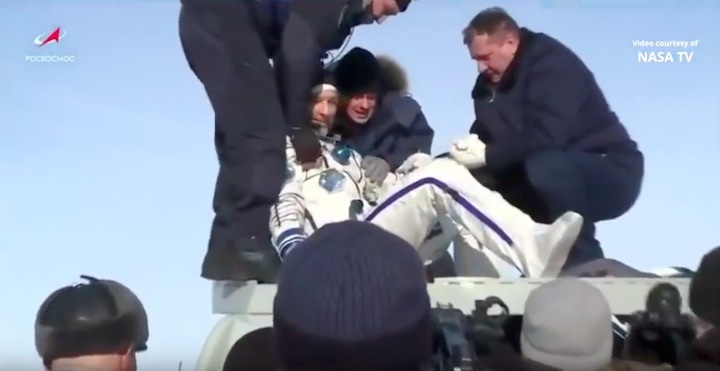
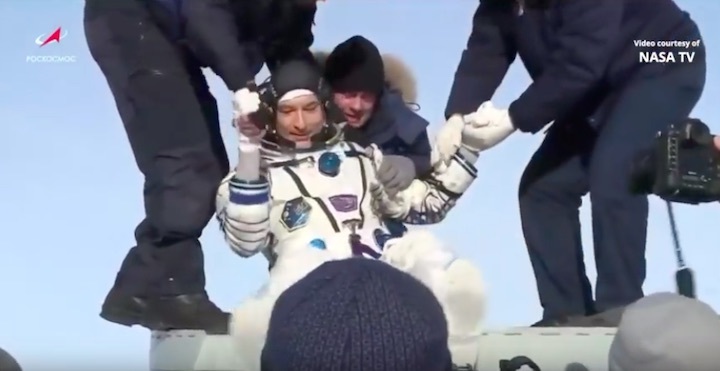
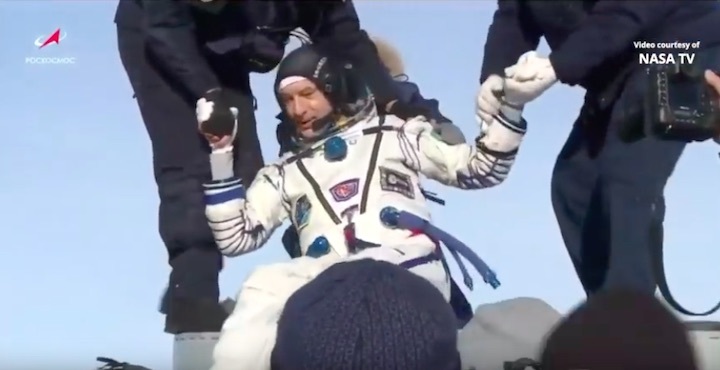
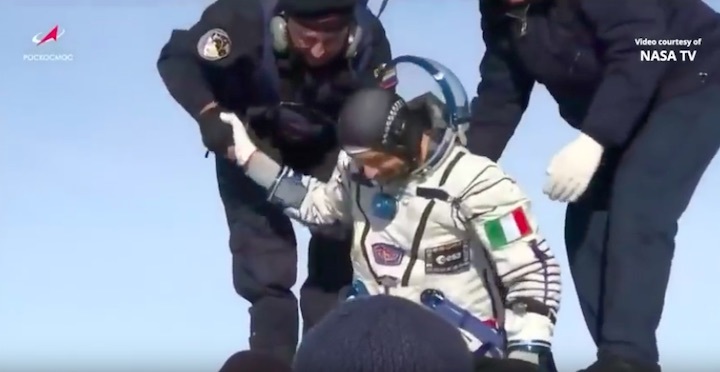
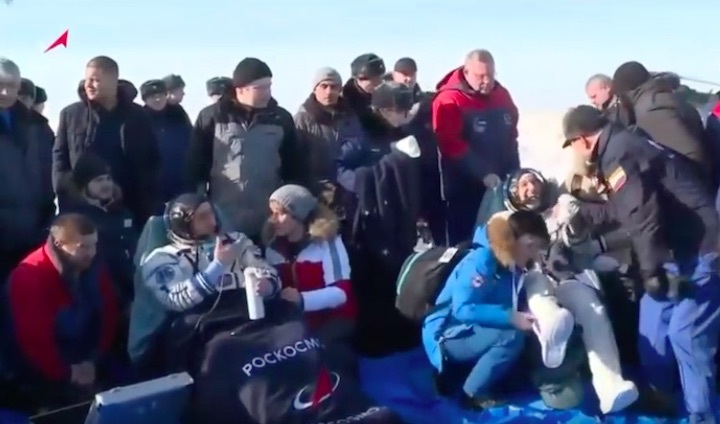
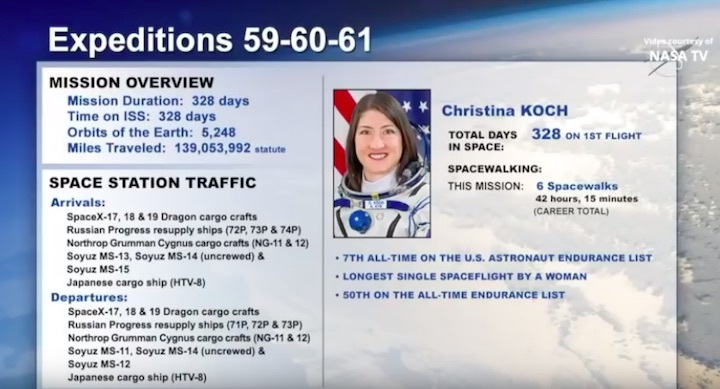
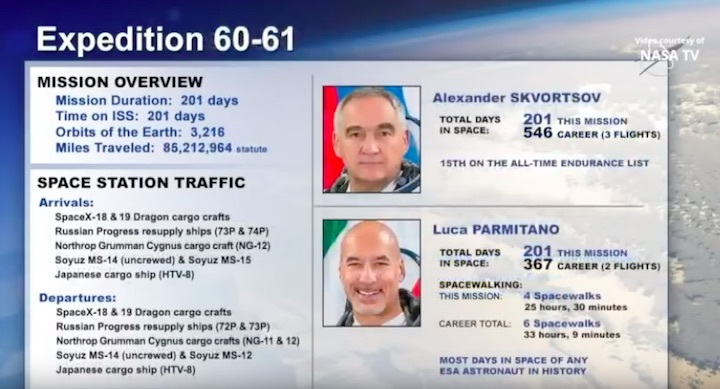
Quelle: NASA
+++
Astronaut Christina Koch lands on Earth after record-setting mission
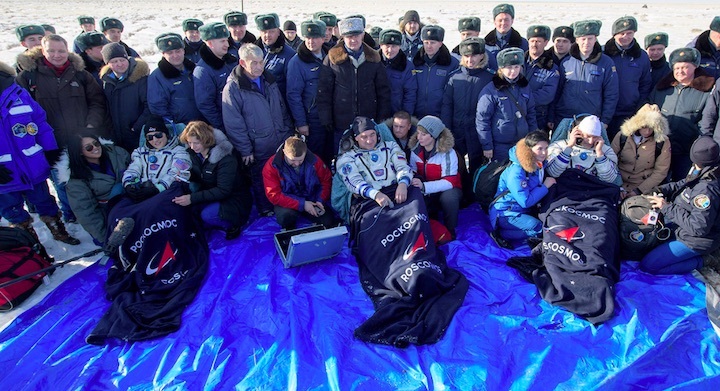
NASA astronaut Christina Koch, cosmonaut Alexander Skvortsov of Roscosmos and European Space Agency (ESA) astronaut Luca Parmitano rest in chairs after landing from the International Space Station on the Kazakh steppe on Feb. 6, 2020. (NASA/Bill Ingalls)
February 6, 2020
— Christina Koch did not set out to break records on her first spaceflight, but with her return to Earth after nearly a year in orbit, her mission is now one for the history books.
Koch, a NASA astronaut, landed on the snow-covered steppe of Kazakhstan on Thursday (Feb. 6) with two of her International Space Station (ISS) crewmates, Expedition 61 commander Luca Parmitano of the European Space Agency (ESA) and cosmonaut Alexander Skvortsov of the Russian space agency Roscosmos.
Descending under a parachute and further slowed by braking thrusters, the three touched down aboard Russia's Soyuz MS-13 spacecraft southeast of the Kazakh town of Dzhezkazgan at 4:12 a.m. EST (0912 GMT or 3:12 p.m. local time).
Russian recovery forces, as well as NASA and ESA medical personnel, arrived quickly at the landing site to assist Koch, Parmitano and Skvortsov out of the space capsule and to conduct brief physical exams as the three crewmates began adjusting to the pull of gravity again.
"Everyone says that getting back into gravity is such a surprise, because you suddenly have to work to raise your own arms and, of course, your legs," Koch said in a media interview a few days before experiencing her first landing. "I haven't even had to hold up my own body weight in a long time, so we will see how that goes."
Koch, Parmitano and Skvortsov all appeared to be in good spirits, as they felt the chill of the open air for the first time since leaving Earth.
"I'm so overwhelmed and happy right now," Koch said a few minutes after landing.
The landing brought to an end Koch's 328 days in space, a new duration record for a single space mission by a woman. Parmitano and Skvortsov, who launched after Koch, returned to Earth after 201 days.
"There are many people on the ground [who] are taking counts of what we have done — how many EVAs [extravehicular activities or spacewalks], how many hours of work, how many experiments, how many days we have spent up here — none of those are important," said Parmitano, addressing his station crewmates during a change of command ceremony on Wednesday. "What is important is what you achieved. You, as the crew, made all of this possible. It has been your incredible, incredible dedication that has made it all possible."
Parmitano, Skvortsov and Koch undocked their Soyuz at 12:50 a.m. EST (0550 GMT). Their departure from the Poisk mini-research module (MRM-2) marked the official end of Expedition 61. Cosmonaut Oleg Skripochka and NASA astronauts Jessica Meir and Andrew Morgan remained on the station to begin Expedition 62.
Koch arrived aboard the orbiting laboratory on March 14, 2019, to join the 59th expedition crew. Originally slated to to return to Earth after just six months, her stay was extended to collect data about the physiological effects of long-duration spaceflight. In December, Koch surpassed the previous record set by a woman — 289 days by NASA astronaut Peggy Whitson in 2017 — and has now completed the second longest single spaceflight by an American astronaut after Scott Kelly, who logged 340 days in 2016.
During her time as a member of the Expedition 59, 60 and 61 crews, Koch participated in more than 210 science investigations, including research into how the human body adjusts to the stresses of spaceflight and protein crystallization growth in support of developing cancer treatments. She also assisted in the robotic capture of uncrewed resupply spacecraft, including SpaceX's 19th Dragon and Northrop Grumman's 12th Cygnus cargo vehicles.
In addition, Koch performed six spacewalks, totaling 42 hours and 15 minutes, to upgrade the batteries for two channels of the space station's solar arrays. She conducted three of the excursions with Meir, setting another record for the first-ever extravehicular activities by an all-women team.
"When we first got the go to come out of the airlock ... we were holding onto a handrail and we just caught each other's eye, we knew [then] how special that moment was and I'll never forget that," said Koch of her first spacewalk with Meir on Oct. 18, 2019.
Over the course of the 328 days, Koch orbited Earth 5,248 times, traveling 139 million miles (224 million kilometers), or the equivalent of about 291 round trips to the moon.
"Milestones are important, and I think they are important for a couple of reasons," said Koch. "They get the conversation going about where we are in the state of the art of human exploration."
"The second aspect is inspiration," she continued. "I think some people draw inspiration from milestones and from things they have seen someone work hard to achieve."
Koch, who now ranks seventh on the list of U.S. space travelers with the most time in space, was not the only record-setter who returned to Earth on Thursday. Completing his second mission, Parmitano has now logged a total of 367 days in space, more than any ESA astronaut in history.
Parmitano also now holds the record for the most time on EVA by a European at 33 hours and 9 minutes. Four of his six career spacewalks were devoted to the repair of the Alpha Magnetic Spectrometer cosmic ray detector, which involved the most complex EVA work since the servicing of the Hubble Space Telescope.
Skvortsov, who has spent 546 days off the planet on three missions, now ranks 15th on the all-time spaceflight endurance list.
From their landing site the three will be flown by helicopter to Karaganda, where they will be greeted by a traditional Kazakh welcome ceremony. From there, Koch and Parmitano will board a NASA jet for Cologne, Germany, where Parmitano will be met by ESA officials before Koch continues to Houston. Skvortsov will be flown by a Gagarin Cosmonaut Training Center aircraft to his home in Star City, Russia.
Soyuz MS-13 was the 59th Soyuz to launch for the International Space Station. It traveled 85.2 million miles (137 million km) completing 3,216 orbits of Earth.
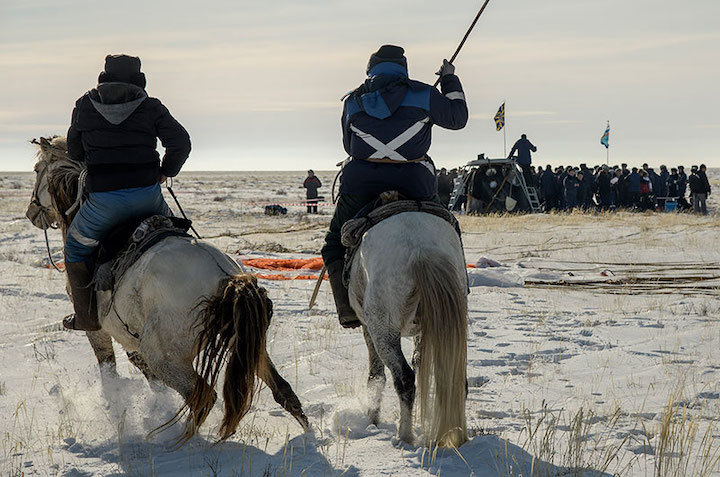
Two locals on horseback arrive at the Soyuz MS-13 spacecraft shortly after it landed in a remote area near the town of Dzhezkazgan, Kazakhstan with crew members Christina Koch of NASA, Alexander Skvortsov of Roscosmos, and Luca Parmitano of ESA, Thursday, Feb. 6, 2020. (NASA/Bill Ingalls)
Quelle: CS
